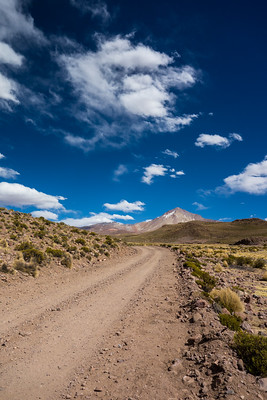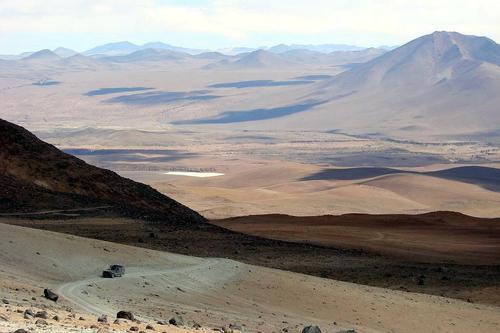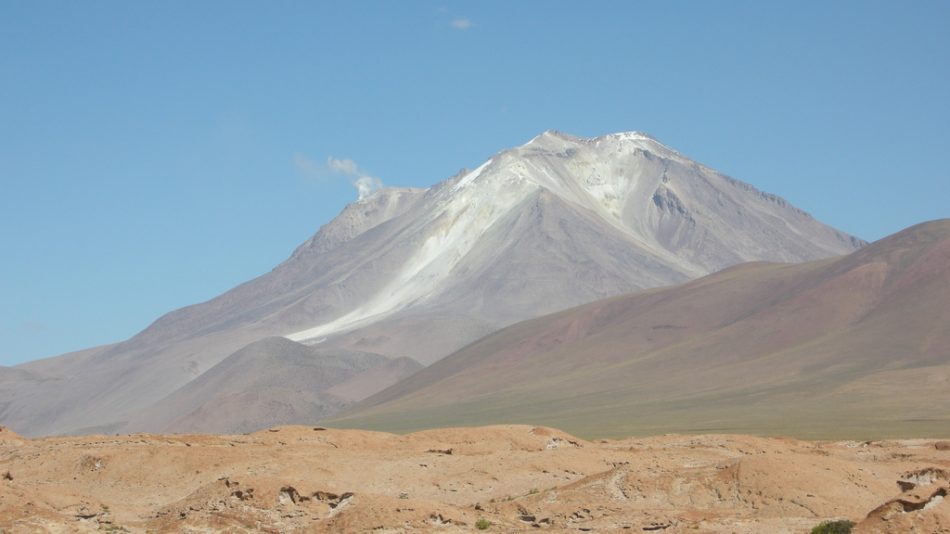Cerro Uturuncu, located in Bolivia, is reputedly the most accessible mountain over 6,000 meters for on-foot ascent. If that seems too daunting, fear not; an alternative exists in the form of a gravel track allowing 4WD vehicles to navigate their way up to 5,800 meters (19,029 feet). However, one must bear in mind that the vehicular journey may exact a toll on the car due to the adverse effects of high altitude.
At elevated altitudes, the air’s oxygen density diminishes significantly. Given that most vehicles operate on fuel combustion, and combustion relies on oxygen, the reduced oxygen levels at higher altitudes can lead to a notable decline in engine performance. It is suggested that for every 1,000 meters (3,281 feet) of altitude gained, a car may lose between 10 and 15 horsepower. Consequently, it’s imperative to perform a quick calculation before attempting the ascent of Uturuncu—avoid the endeavor with a 70 horsepower vehicle, unless courting the risk of engine failure.
| Location | Potosi, Bolivia |
| Mountain range | Cordillera de Lípez |
| Elevation | 19,711 ft (6,008 metres) |
| Road | Gravel (19,028 ft - 5.800 metres) |
| Mountain type | Stratovolcano |
| Best time to visit Uturuncu | From Mayo to September |
If you are prepared for the challenges, driving to Cerro Uturuncu can be an incredible experience. The views from the top are breathtaking, and the feeling of reaching 5,800 meters by car is incredible.
Driving Uturuncu

Cerro Uturuncu road, Adrianpua
As previously mentioned, it is feasible to drive by car up to 5,800 meters, just a few meters from the summit of Cerro Uturuncu. However, it’s crucial to bear in mind that the road to the top is winding and narrow, necessitating a 4×4 for a successful ascent. Additionally, the high altitude can pose a challenge for some drivers.
Exercising caution during the drive is paramount. The altitude may present challenges, underscoring the importance of taking frequent breaks and staying well-hydrated. Given the unpredictable weather, it is advisable to pack warm clothes and a raincoat. Considering the limited refueling options along the route, it’s imperative to ensure an ample supply of gas before embarking on the journey.
Volcano Uturuncu
Uturuncu, meaning “sleeping tiger” in Aymara, a native language of the central Andes, is a dormant volcano soaring to an altitude of 6,008 meters. A sought-after destination for mountaineers and hikers, Uturuncu offers a relatively accessible ascent with spectacular views from its summit. Beyond its recreational appeal, Uturuncu holds significance for scientific research. Scientists delve into the geological history of the region and explore the processes shaping the Andes through the study of this dormant volcano.
The panoramic vistas from the pinnacle of Uturuncu are truly breathtaking, encompassing the Uyuni salt flats, vividly colored lakes, and surrounding volcanoes. The climate at the summit is characterized by cold temperatures and strong winds, underscoring the importance of thorough preparation and well-equipped gear for those venturing to the top.

Impressive photo of Alejandro Danci during his 4×4 expedition to the Uturuncu volcano
History
Uturuncu was formed by a series of volcanic eruptions that occurred millions of years ago. The last eruption of Uturuncu occurred about 250,000 years ago. Uturuncu has been an important place for humans for thousands of years. The Incas considered it a sacred mountain and used it as a place of pilgrimage. The remains of an ancient sulfur mine, called Uturuncu, are located near the summit. It was considered one of the highest in the world.
Uturuncu has also been an important place for European explorers. The first European to reach the summit was the German explorer Paul Güssfeldt in 1892. Güssfeldt was a German explorer and geographer who dedicated himself to exploring the highlands of Bolivia and Peru. The stone track that leads to 5,800 meters was built in the early 20th century to facilitate access to a sulfur mine located near the highest point of the volcano.
Google Maps
Uturuncu is located in the Bolivian Alps and is the highest mountain in the department of Potosí and also in the southern region of Bolivia. Uturuncu belongs to the San Pablo de Lípez municipality in southern Bolivia and is located southeast of the town of Quetena and northeast of the Eduardo Avaroa Andean Fauna National Reserve.
Guinness World Record for Highest Altitude for an Electric Car at Uturuncu

In June 2022, Rainer Zietlow broke a new Guinness World Record by driving a Volkswagen ID.4 GTX to an altitude of 5,816 meters above sea level. The car, with all-wheel drive, has a maximum power of 299 horsepower. The 77 kWh lithium-ion battery gives it a WLTP range of 480 kilometers. The journey began in Santiago, Chile, and the team took 12 days to reach the summit of Cerro Uturuncu.
It is worth noting that electric motors are not affected by the lack of oxygen in the atmosphere at high altitudes, while internal combustion engines are. For example, in the classic Pikes Peak race in the United States, it is estimated that the power loss reaches up to 50% at the summit, which is located above 4,000 meters.
Read it in Spanish: La carretera del volcán Uturuncu


 (3 votes, average: 4.67 out of 5)
(3 votes, average: 4.67 out of 5)










